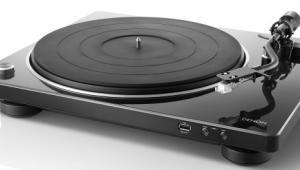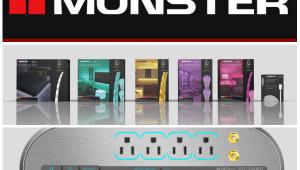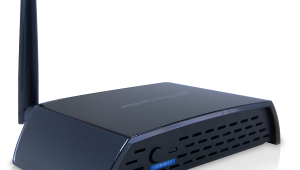Torque Releases New Filter Valves for its Tunable t103z In-Ear Monitors

Torque has sent out three new PAVT in addition to the original three options that are interchangeable, just like the originals. Let’s review. The t103z is an in-ear monitor with aluminum and orange plastic trim pieces. The main cable is a flat, tangle-free cord with a compact L-shaped 3.5mm plug. Instead of a Y-split, the cable terminates in an aluminum-encased shell that houses the iOS-compatible microphone and remote. From that, two thin, round cables extend to the earpieces. And it’s at the earpiece that things get interesting.
When you first open the t103z, you’ll quickly realize that it’s missing the part that actually goes into the ear canal. The t103z ships in a retro-punk tin canister that houses the earphones, a soft-sided carrying case (also accented in orange) and a small strip of metal that holds the original three pairs of the PAVTs. One end of the strip is shaped to function as a small wrench for releasing the valves if they’ve been overtightened. They should only be tightened by hand. They simply and securely screw into the ends of the earpieces with an o-ring seal, and then a selection of eartips can be used. The t103z ship with a good assortment of soft rubber tips and a pair of dual-flanged tips.
All of the PAVTs are color-coded. The original three are red, black, and yellow. The red are the “Reference Valve” with a flat EQ response. The black are the “Clear Valve” with a slightly elevated high-end response. The yellow are the “Deep Valve” with enhanced bass and a rolled-off treble. The difference between the valves are subtle, but have a significant impact depending on your taste and perception. Personally, I prefered the red Reference Valve as it had the most natural response, but I was anxious to hear the three new valves.
The first new valve is green “Balanced Valve” that has a similar response to the red “Reference Valve” but has a slight U/V curve, or what I like to call the “Smiley Face” response. The bass and treble are slightly boosted while the midrange is slightly reduced. I expected this to be my favorite but felt the decrease in the mids affected tenor male vocal clarity a bit too dramatically.
The blue “Smooth Valve” has a bass boost, as does the original yellow, but in this case, it appropriately has a smoother response. The yellow has a tighter, more pounding bass but it could get overwhelmingly boomy on some tracks. With the blue valve, the bass is more controlled than the yellow, and it has a smoother transition into the mids and highs. I found this valve the most interesting. It gave pop and rock music just the right impact, but also imparted a pleasant warmth on acoustic and classical tracks.
Interestingly, the purple “Bliss Valve” was personally tuned by the CEO of Torque, and it’s said to provide the best sound for trance and EDM. It boosts the mids while leaving bass and treble flat. I found it too much on most music tracks, but oddly enough, I found that midrange boost useful while listening to movie dialogue—it helped lift muddied dialogue out of the background. It was especially helpful on Interstellar with its intentionally subdued dialogue track.
In the end, the beauty of all the interchangeable PAVTs on the Torque t103z is that it lets each and every user decide how they like their earphones to sound. I know that I prefer a warmer sound with tight, deep bass. I can pick that. Instead of being forced to listen to the sound that a manufacturer believes you want to hear, you can choose what you want, when you want it. Swapping valves takes under a minute—not something you’ll want to do between every track, but surely as you settle into a mood, you can pick the sound you want. Each of the additional valves sells for $20, and more options will be available soon. Ideally, you should be able to purchase the t103z with the three valves you think you’re most likely to use, but perhaps now I’m being too choosy. Or not.
- Log in or register to post comments




































































